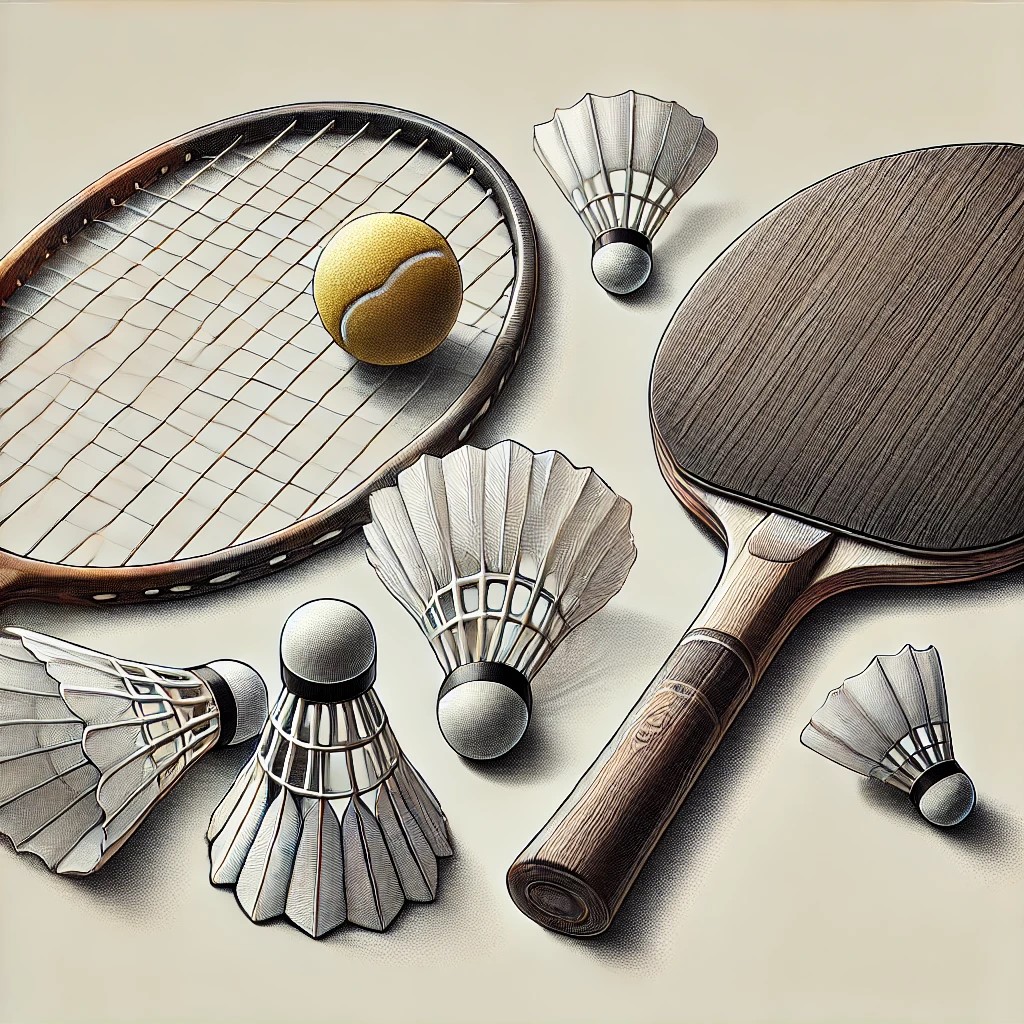
The Fascinating World of Racketlon
Racketlon is an extraordinary sport that combines four racket-based disciplines: table tennis, badminton, squash, and tennis. Players compete in all four games in a single match, with the winner being determined by their total points across all disciplines. This unique format requires versatility, endurance, and skill, making it one of the most captivating racket sports in the world. Although relatively young compared to traditional sports, racketlon has gained significant global traction, inspiring both amateur enthusiasts and professional athletes. This blog will explore the origins, global popularity, amateur scene, professional leagues, societal impact, and rules of this dynamic sport.
Origin and History of Racketlon
The history of racketlon traces back to the late 1980s in Finland and Sweden. Enthusiasts who were skilled in multiple racket sports sought to create a platform to showcase their abilities in a single competitive format. By 1986, the concept solidified with the first organized racketlon tournament held in Finland. The sport’s format mirrored that of triathlons, where athletes compete in various disciplines but with a single unifying goal.
The 1990s saw racketlon gaining traction, particularly in Scandinavia. Its appeal lay in its inclusivity, allowing players from different racket sports to test their overall competence. By the early 2000s, international governing bodies emerged, such as the International Racketlon Federation (IRF), established in 2001. This marked a significant milestone, formalizing the sport’s rules and organizing global tournaments. The first World Championships were held in Gothenburg, Sweden, in 2002, further solidifying its place on the international stage.
Over the years, the sport expanded beyond Europe, reaching countries in Asia, North America, and Australia. Its structured tournaments and engaging format have drawn players and audiences worldwide. This rapid growth underscores its universal appeal.
Global Popularity of Racketlon
Racketlon has evolved from a niche activity to a global phenomenon. Europe remains the epicenter, with countries like Sweden, Finland, Austria, and the UK hosting numerous tournaments annually. These nations have thriving local communities and consistently produce top-ranked players.
In Asia, racketlon has started to gain momentum, especially in countries with strong traditions in badminton, squash, and table tennis. India, Japan, and Singapore have shown growing interest, with more players participating in international competitions. Australia and New Zealand have also embraced the sport, hosting events and integrating it into their vibrant sporting culture.
North America has been slower to adopt racketlon compared to Europe and Asia. However, its popularity is steadily rising, especially in Canada and parts of the United States. Clubs and associations are forming, and efforts to promote the sport at the grassroots level are increasing. The inclusion of racketlon in multi-sport events, such as the World Games, has also amplified its global visibility. As awareness grows, more countries are expected to join the international circuit.
Amateur Racketlon: Youth and Schools
Amateur racketlon plays a crucial role in the sport’s growth. Its accessibility and engaging format make it ideal for schools and youth programs. Many schools in Europe have introduced racketlon as part of their physical education curriculum. This approach allows students to explore multiple racket sports while developing coordination, fitness, and strategic thinking.
Youth tournaments are frequently organized, providing young players with opportunities to compete and refine their skills. These events often have beginner-friendly formats, encouraging participation from all skill levels. Clubs and local associations also play a vital role by offering coaching programs and facilities for amateurs. In some regions, family-friendly tournaments encourage parents and children to participate together, fostering a community spirit.
Outside of Europe, countries like India and Japan are introducing racketlon at the grassroots level. Efforts focus on integrating the sport into school programs and promoting it through regional events. This grassroots approach not only nurtures young talent but also builds a solid foundation for the sport’s future.
Professional Leagues and Global Competitions
Professional racketlon has grown significantly, with a well-structured competitive landscape. The International Racketlon Federation oversees the sport’s professional scene, organizing prestigious tournaments like the World Championships and the Racketlon World Tour. These events attract elite players who showcase exceptional skill across all four disciplines.
Europe dominates the professional scene, with countries like Austria, Sweden, and Denmark producing world-class athletes. The Champions League of Racketlon is another notable competition, featuring top clubs from around the globe. This league format emphasizes team strategy and fosters international collaboration.
Asia is emerging as a strong contender in professional racketlon. Players from India and Japan have started making their mark, challenging European dominance. Regional tournaments and increased investment in training facilities have played a significant role in this progress.
The sport’s professional circuit also extends to doubles and mixed doubles formats, adding variety and excitement. These categories attract players who excel in teamwork and coordination, showcasing a different dimension of racketlon.
Political and Social Significance
Racketlon has a unique ability to bring people together, transcending cultural and national boundaries. Its inclusive nature promotes equality, as players must excel across all disciplines rather than relying on a single strength. This principle resonates with the values of fairness and sportsmanship, making it a unifying force in diverse communities.
The sport’s popularity in Europe has fostered cross-border collaboration, with clubs and associations working together to organize events. This spirit of cooperation is especially significant in regions with historical tensions. By creating a neutral platform for competition, racketlon contributes to cultural exchange and mutual understanding.
Socially, the sport’s accessibility makes it an excellent tool for promoting physical activity and healthy lifestyles. Programs targeting youth and underprivileged communities use racketlon to encourage participation in sports, improving physical and mental well-being. The emphasis on versatility teaches valuable life skills such as adaptability and perseverance.
Rules and Format of Racketlon
The rules of racketlon are straightforward yet demanding. Each match consists of four sets, one for each sport: table tennis, badminton, squash, and tennis. Players compete in all four disciplines sequentially, starting with table tennis and ending with tennis. Each set is played to 21 points, with players switching sides at 11 points. The winner is the player with the highest total points across all sets.
In doubles matches, pairs alternate turns, ensuring equal participation. Mixed doubles add another layer of strategy, as teams must balance individual strengths with effective coordination. The sport’s scoring system emphasizes consistency and adaptability, rewarding players who can perform well across all disciplines.
Tournaments typically follow a knockout or round-robin format. Matches are designed to test endurance, as players must maintain focus and energy throughout all four games. The unique format ensures that no single sport dominates, leveling the playing field and emphasizing all-around competence.
Rules governing equipment and court specifications align with the standards of each individual sport. This ensures fairness while preserving the integrity of each discipline. Players must adapt quickly to different court sizes, surfaces, and dynamics, showcasing their versatility and strategic thinking.
Conclusion
Racketlon is a dynamic and inclusive sport that has captured the imagination of players and audiences worldwide. Its unique combination of table tennis, badminton, squash, and tennis sets it apart, requiring unparalleled versatility and skill. From its origins in Scandinavia to its global popularity today, racketlon continues to inspire and unite people from diverse backgrounds.
Amateur and professional scenes thrive, supported by schools, clubs, and international governing bodies. The sport’s social and political significance adds depth to its appeal, promoting values of equality, cooperation, and healthy competition. Whether played recreationally or professionally, racketlon offers a thrilling and rewarding experience for all who participate. As awareness grows, the future of this captivating sport looks brighter than ever.





